Why don't you go into the water when you are steaming? How should a novice master the gouache ratio?
/ /
Question one

Do you find that you can't get into the water by injecting coffee by hand and steaming? The editor tells you that this is the right operation!
The function of steaming is to let the hot water slowly seep into the center of the coffee powder so that the substance in the coffee powder dissolves in the hot water first to form a high concentration of coffee liquid. In the second brewing, using the physical phenomenon of the concentration, the high concentration (steamed coffee liquid) moves to the low concentration (hot water) and reaches the middle concentration (the concentration is the same).
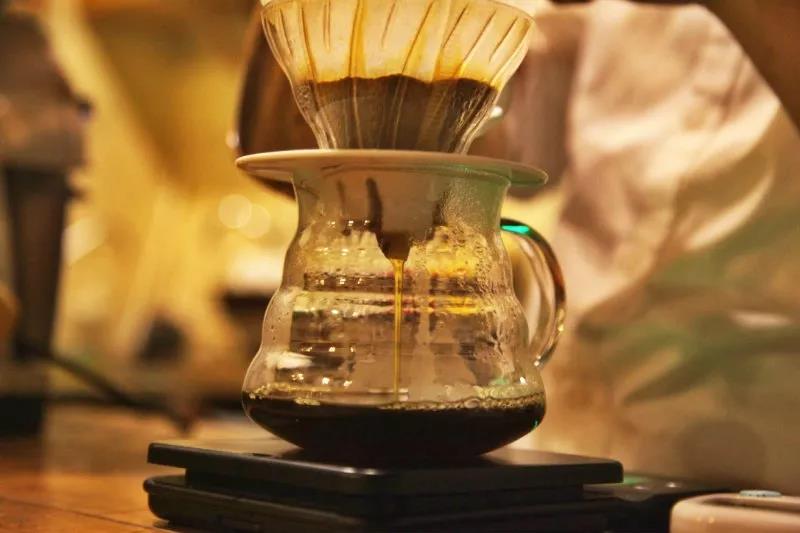
So if there is too much steaming water, dripping a large amount of coffee liquid, the situation is that the falling water does not stay but directly brings out the substance outside the coffee powder. When the outer layer of coffee powder is dissolved, the inner layer of coffee powder is still dry. When hot water seeps into the inner layer of coffee powder.. The miscellaneous and astringent taste of the outer layer of coffee powder also began to dissolve. The coffee brewed in this way is not only light, but also has an exquisite mixed smell.
If the amount of stuffy steam is insufficient and no water droplets fall at all, then the coffee powder does not absorb enough water, and some coffee is not exhaust enough, which will cause insufficient extraction.
So how much steaming water should be?
In general, there are two algorithms:
① is 1.5 times the amount of coffee powder. For example, using 15 grams of coffee powder, the amount of steaming water is about 23 grams and 30 grams, and the amount of light roasted coffee can be slightly less.
② to extract 1ml of total coffee 10, for example, to extract 240ml of coffee, steaming water with 240g, the same light roasted coffee can be slightly less
Therefore, in the correct steaming state, it is best to drop a few drops of water, but only if the steaming water is completely and evenly distributed on the coffee powder as shown above, to ensure that every coffee powder can absorb water.
Therefore, a good stew can not only make the coffee powder exhaust quickly, fully and evenly, but also make the coffee powder fully contact with the water, helping the coffee powder to be extracted evenly.
In order to do this, there should be plenty of stewed water in the first place. In addition to the fact that the coffee powder absorbs about twice its own weight during stewing, some of the water leaks along the filter cup or through the powder bed. Therefore, stew should use about 2 to 3 times the weight of coffee powder water, which can provide sufficient water for coffee powder absorption. Then, when steaming, you can use a little trick to do a good stew.
Steaming and stirring
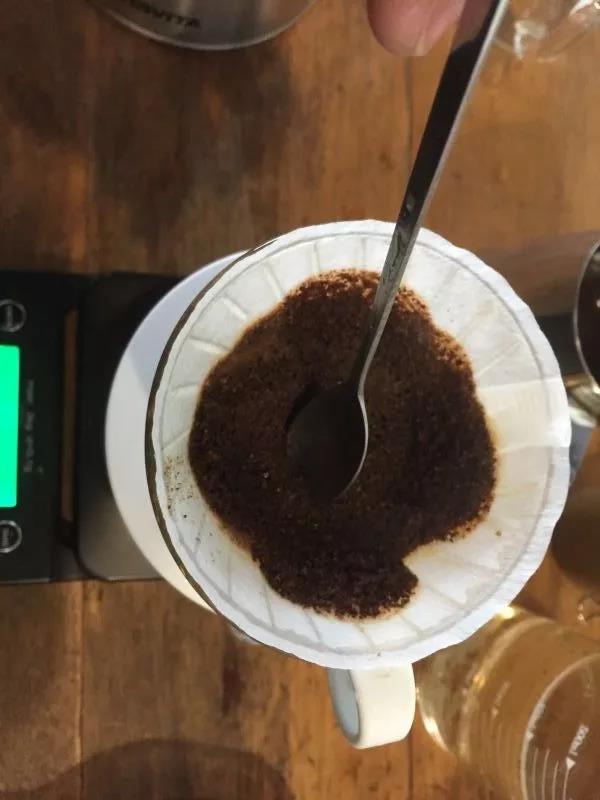
The trick is to insert a small spoon into the powder bed after injecting stewed water, gently move the powder bed four times in each direction, and then wait another 20 seconds.
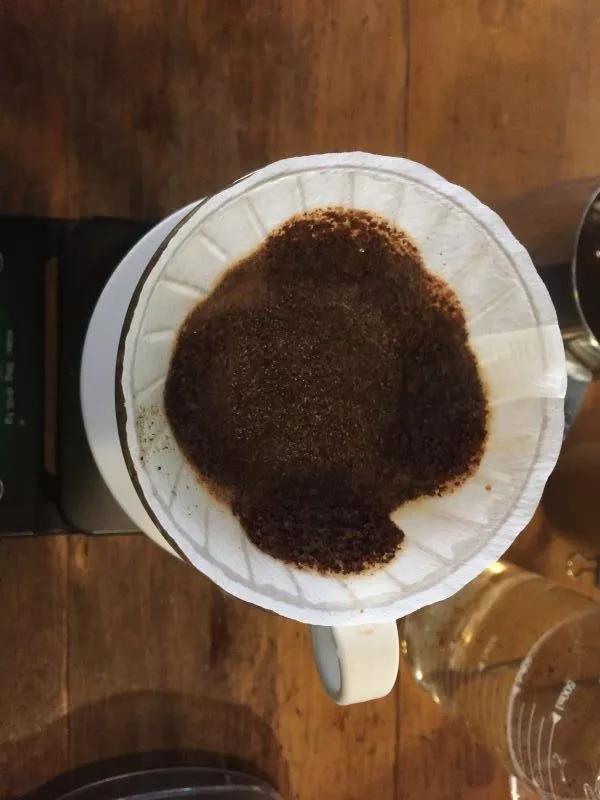
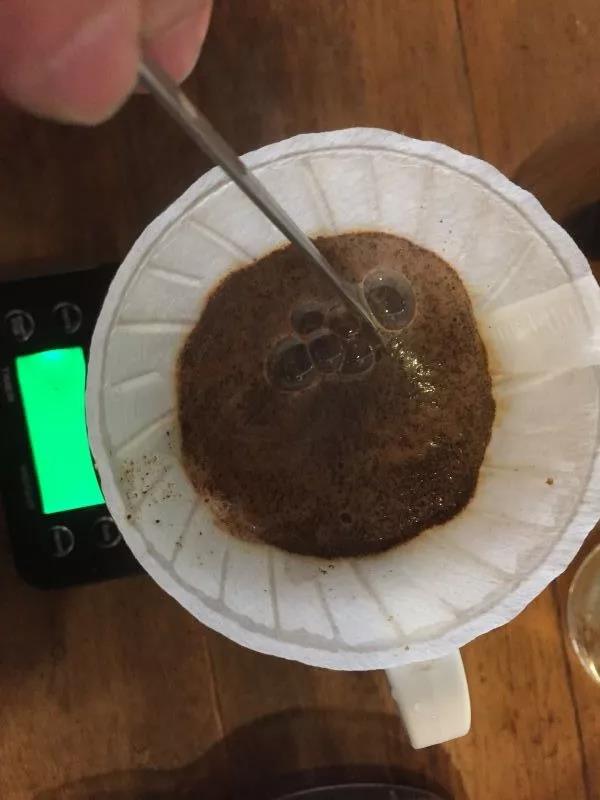
How to master the gouache ratio of hand-brewed coffee? To tell you the truth, the editor thinks that if you like coffee, some people like strong ones, others like light ones.
But what I want to say here is why do we always recommend gouache ratio between 1-14-14-1-1-16?
First of all, let's talk about the ratio of water to powder when we make a cup test.
The purpose of this ratio is to keep the concentration and extraction rate of coffee within the range of gold cup, that is, 1. 5%. The extraction rate is between 18% and 22%. two。 The coffee concentration is in the range of 1.2% to 1.45%.
As for the ratio of gouache to powder made by hand, it is to make your coffee taste better. Because friends who have done a cup test all know that the coffee tested in the cup is relatively light, this is in order to better distinguish the various flavors of the coffee, and the cup test round is about 20 minutes, the coffee powder is completely soaked, and the flavor can be completely released. On the other hand, hand brewing takes out the coffee contents with water within 2 to 3 minutes, so in order to achieve the same extraction effect, it is necessary to reduce the ratio of water to powder, which depends on the roasting degree of coffee. And such a ratio, as long as there is no divine operation in the process of brewing, it will not be too bad.
Of course, there are exceptions to everything. The editor personally likes to brew the red standard rose summer in the jadeite manor at 1:18, which can show the complete aroma of flowers and fruit. You can also use 1:13 or even 1:12 to rush the Blue Mountains or Manning, that is, only extract the flavor of the front and middle section.
As for the variety of hand-flushing techniques, the editor's suggestion is that as long as the coffee is delicious and suitable for your own powder-to-water ratio, that's right.
How to convert the ratio of powder to water and the ratio of powder to liquid?
Finally, how to convert the ratio of powder to water and the ratio of powder to liquid? In fact, it is not difficult, as mentioned earlier, coffee grounds absorb about 1.5ml 2 times its dry weight of water, then the ratio of powder to water, 15 grams of powder absorbs about 30 grams of water. For example, if the ratio of powder to water is 1:15, it is equivalent to the ratio of powder to liquid. When meeting some colleagues who are different from their own techniques and algorithms, as long as they are simply secretly converted, they can be compared with their own parameters for reference.
Important Notice :
前街咖啡 FrontStreet Coffee has moved to new addredd:
FrontStreet Coffee Address: 315,Donghua East Road,GuangZhou
Tel:020 38364473
- Prev
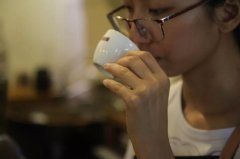
How to taste coffee? What are the common sensory misunderstandings?
Today's content is relatively short, but very important! Coffee sensory main part: flavor taste, flavor reflected in the nose before the smell, nasal cavity smell; taste reflected in the sweet and sour, bitter and salty, liquid weight. Sensory coffee secondary part: vision and hearing, including coffee color, cup, discussion, music and so on. This article focuses on the main part * the importance of senses.
- Next

What is freshly ground hand-brewed coffee? What are the steps and tools for hand flushing? How to Make Indonesia
Professional coffee knowledge exchange More coffee bean information Please pay attention to coffee workshop (Weixin Official Accounts cafe_style) Hand brewed coffee, as its name implies, is to pour hot water on coffee powder, through filter paper and filter cup extract coffee, the whole brewing process is about 3 to 4 minutes. Since the flow rate, direction and temperature of the hot water are controlled by the brewer, the coffee flavor is almost always brewed.
Related
- What is the meaning of lactic acid fermentation with coffee bean treatment?
- How to judge the state of foam by sound?
- How does the latte pull out the unicorn pattern? Come to get for a little trick to improve the flower pull!
- Will flower pulling affect the taste of the latte?
- Do you know the history of coffee?
- The difference between honey treatment and sun washing what is raisin honey treatment?
- What kind of milk can a novice use to make coffee foam to keep the foam longer? The correct method and skills of milking tutorial sharing
- Why do washed coffee beans taste sour? Flavor characteristics of washed Coffee
- Introduction to the skill of how to practice the size and height of water injection around the circle of hand-brewed coffee
- How do beginners practice coffee flower drawing from scratch?

